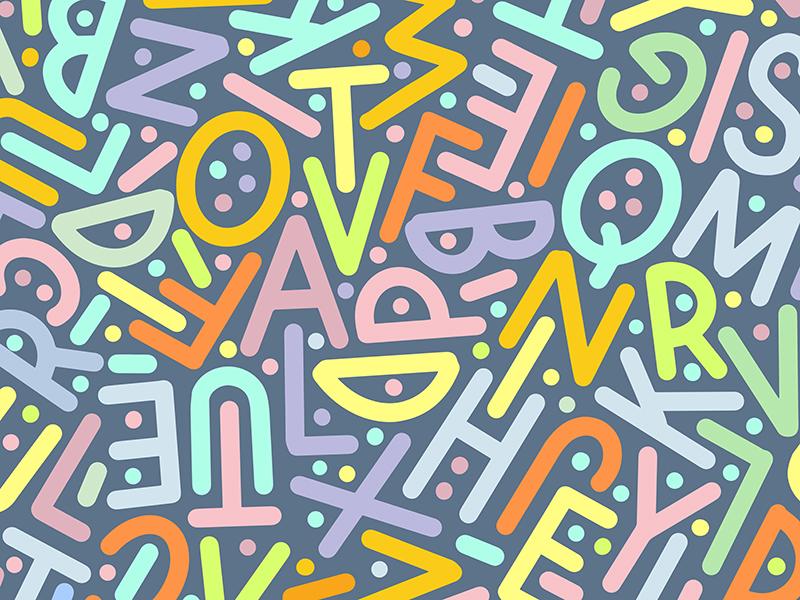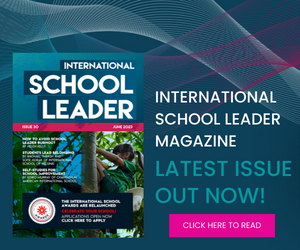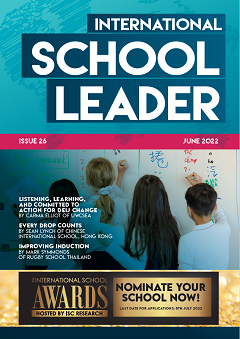By Fiyaz Ahmed
At Ajman Academy, meaningful technology integration has been at the heart of our school improvement journey over the past few years. The investment made, with regards to infrastructure and educational technologies, proved to be invaluable to our school community during the pandemic. The dilemma was to decide how to leverage technology in supporting our students by removing barriers to learning whilst maximising our impact on student learning outcomes.
Creating equitable learning opportunities
With a school cohort of 98% of students with English as an Additional Language (EAL), and with dyslexia affecting 10% of people worldwide, using technology to support EAL students and those on the dyslexia continuum was a logical next step. On the face of it, there are many similarities in the challenges faced by both dyslexic students and second language learners and, therefore, we must be mindful of not mislabelling students.
Our challenge was to develop a methodology that enabled all students to benefit from using technology in an innovative way to not only remove barriers to learning, but also create an equitable pedagogical approach to learning and teaching. Equitable learning opportunities for students are fundamental for their success, as every student has unique needs that must be met and catered for in order to realise their full potential. Our intervention strategy needed to be effective, sustainable and scalable to help students with EAL overcome the challenge of learning to speak, read and write English. The use of educational technologies helped us in developing the equitable style of delivery we were looking for.
Language equity through technology
As an Apple Distinguished School, our students were already familiar with using iPads to support their learning, as were our staff and community. However, the problem for many schools is in trying to empower teachers to integrate technology in a way that will modify and redefine learning for students and not just a substitution of one learning engagement for another.
Students with dyslexia and students with EAL can be taught through a dyslexia-friendly pedagogical approach. With this in mind, we used the British Dyslexia Association Dyslexia Friendly Schools Award framework, which meant we could develop a clear focus and identify specific criteria to foster consistent practice.
The sequence of events to our approach was further embedded through a guiding statements review, an alignment of school policies and a classroom environment and pedagogy audit leading to a sustainable culture shift within the school.
“Educational technologies helped us in developing the equitable style of delivery we were looking for.”
Steps to implementation, sustainability and scalability
- Vision, mission and philosophy: A review of the school’s guiding statements by all stakeholders.
- Policy review: To reflect the change in culture and approach.
- Staff professional development: To improve technology skills and develop staff confidence.
- Pedagogical approach: The consistent use of technology and the iPad accessibility features.
- Creation of technology integration committee: To continue to champion the initiative and to coach staff.
- A digital leaders programme: To share, collaborate and embed with our students.
Removing barriers to learning
An initial audit of staff competency in using technology showed that teachers were confident in using the iPad and in using technology to support pedagogy. However, not everyone was familiar with the iPad accessibility features and how these could be used to remove barriers to learning that had previously not been fully understood or considered. Therefore, a staff professional development programme was introduced to not only create a consistent approach to our pedagogy, but also to create an environment that supported a dyslexia-friendly approach.
Universal design, combined with assistive learning tools, allowed our students to engage with the way they learn, explore, think and express themselves. Universal design has been adopted as our pedagogical approach for creating an inclusive learning and teaching environment in a mainstream classroom. Speak selection and speak screen facilities support reading and comprehension by allowing students to listen to text (they can highlight text they want to hear and follow along as the words, sentences or paragraphs are read aloud). Dictation, as an assistive tool, supports our students who struggle with writing. Students use dictation to write with their voices and predicted text features promote opportunities for them to improve spelling and develop vocabulary.
Dyslexia-friendly presentation styles are also routinely used by our teachers, through careful choice of colour background and font selection, to enable students easy access to on-screen learning. Reading is enhanced by the use of colour filters, making accessing texts more fluent and comfortable by reducing visual stress.
Supporting the ability to read to learn
Even as far back as the Rose Report in 2009, it was suggested that success at school can depend heavily on the ability to ‘read to learn’ and when that is a challenge, the overall educational progress of children can be seriously hampered with long-lasting consequences. It is also generally accepted that dyslexia-friendly accommodations benefit all students.
These small changes, along with educational technologies, have brought a considerable amount of independence to our learners and have improved literacy standards throughout the school. Small-scale action research has also confirmed that student attainment and engagement have improved.
The true measure of any initiative is the impact that it has on the school community. The use of technology sometimes manifests itself in ways that cannot be measured using traditional metrics. Our school culture has evolved for the better as a result of this initiative, and an ethos, where taking risks is part of the norm, has led to a more inclusive school environment.
Implementation advice
- Spend time selling the benefits of a dyslexia-friendly approach for all students, to all stakeholders.
- The use of an accredited dyslexia-friendly schools framework to guide and support school-wide practice.
- The delivery of staff CPD that focuses on a dyslexia-friendly pedagogical approach from qualified dyslexia specialists.
- Create a Technology Integration Committee and Technology Integration Specialist role to support staff understanding and use of accessibility features.
- Adapt and amend school policies and processes to support a change and shift in culture.

Fiyaz Ahmed is the former Director of School at Ajman Academy and is now working as an Educational Consultant, based in Jordan. Connect with Fiyaz on LinkedIn




